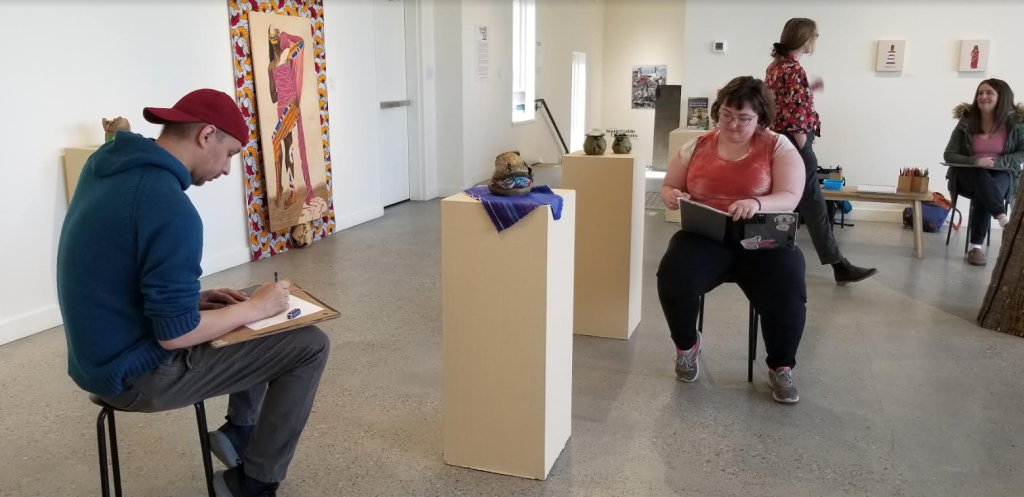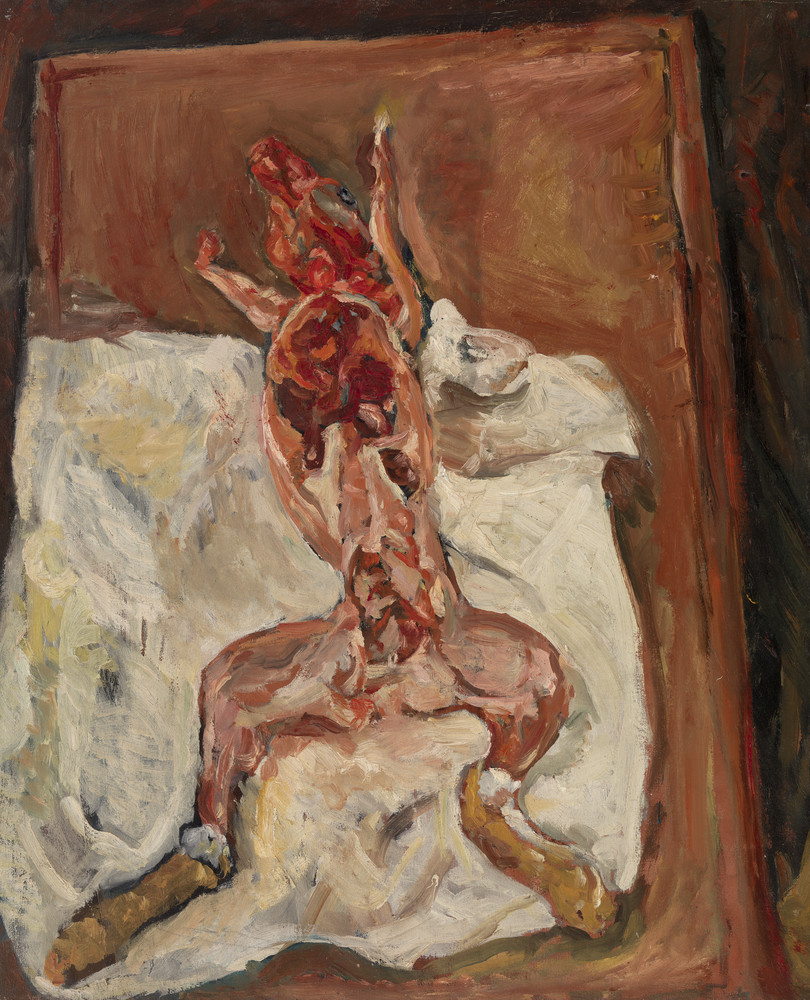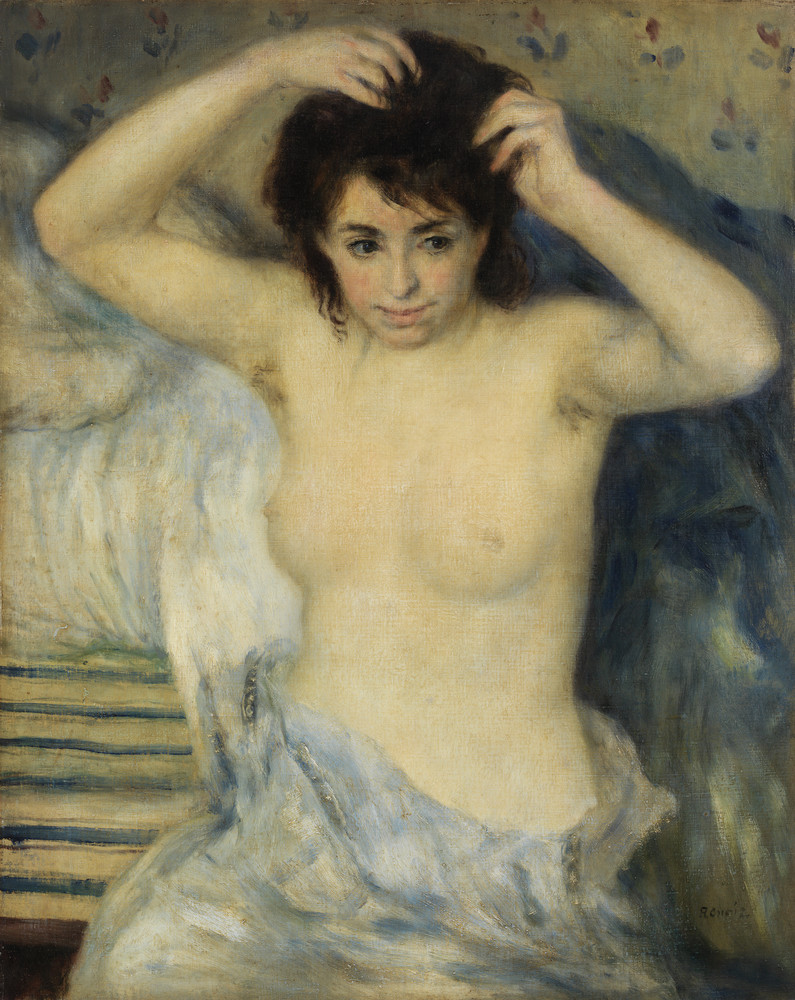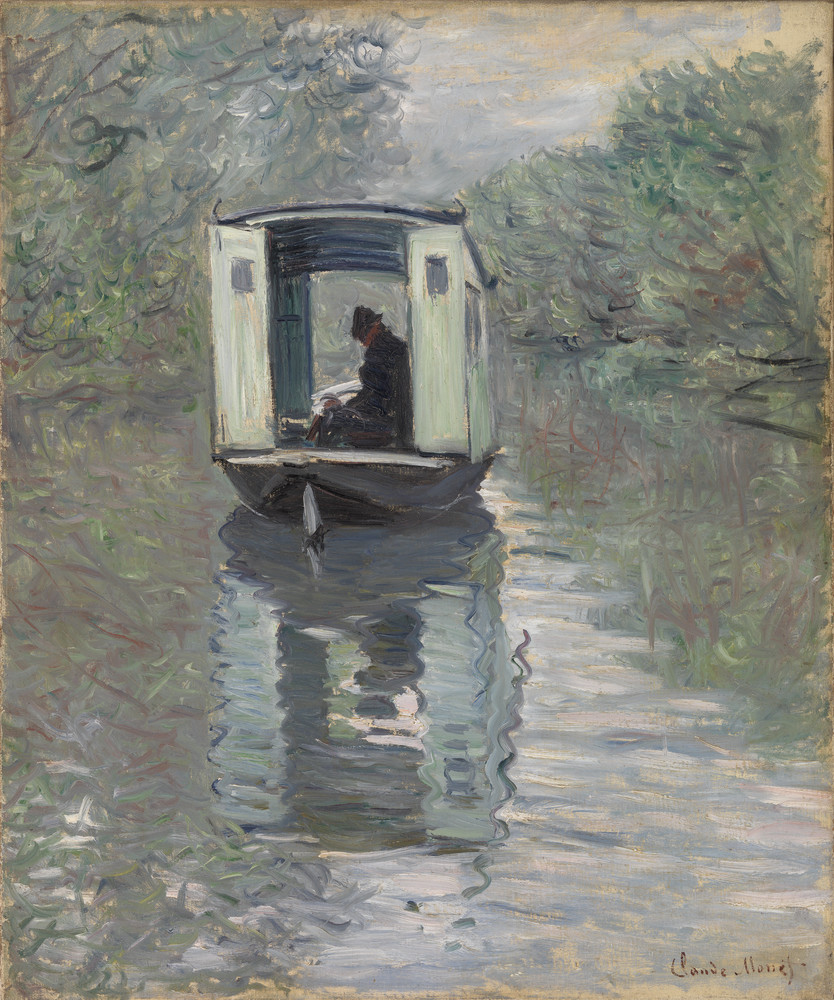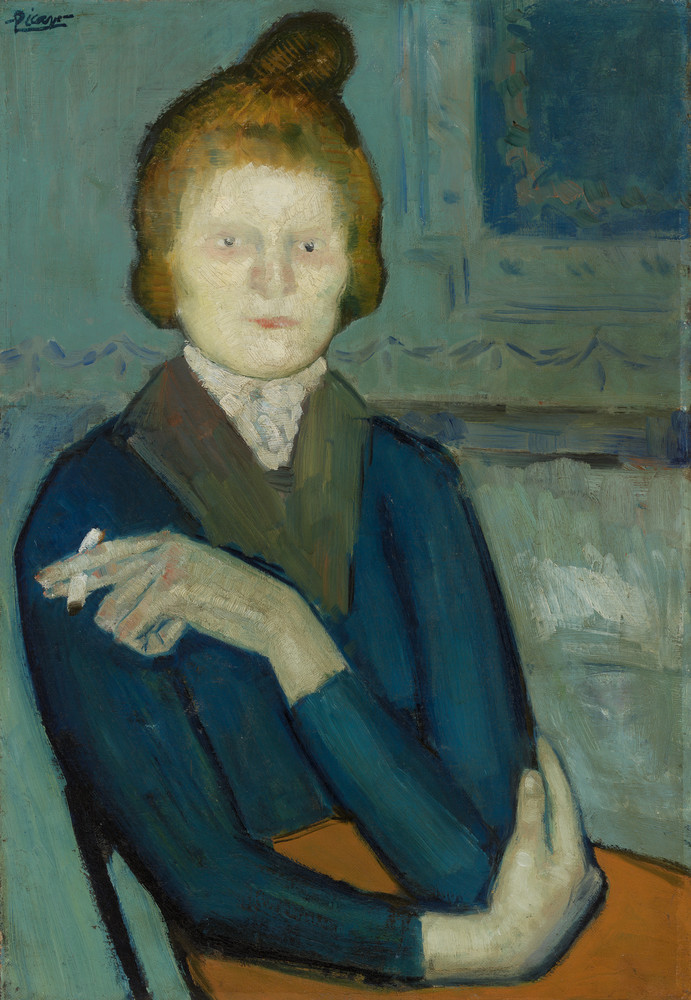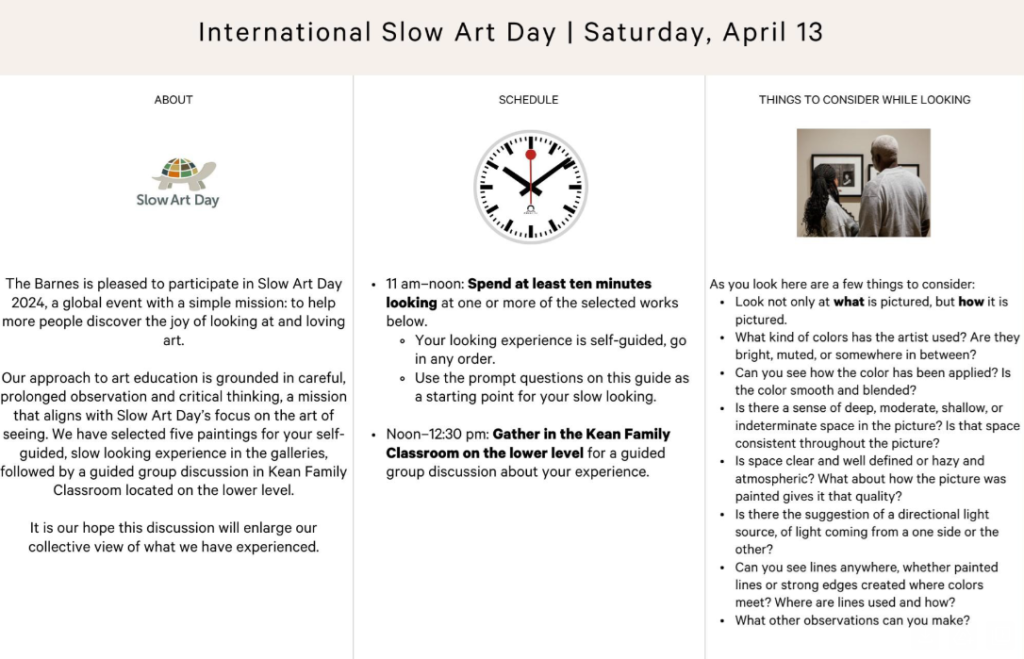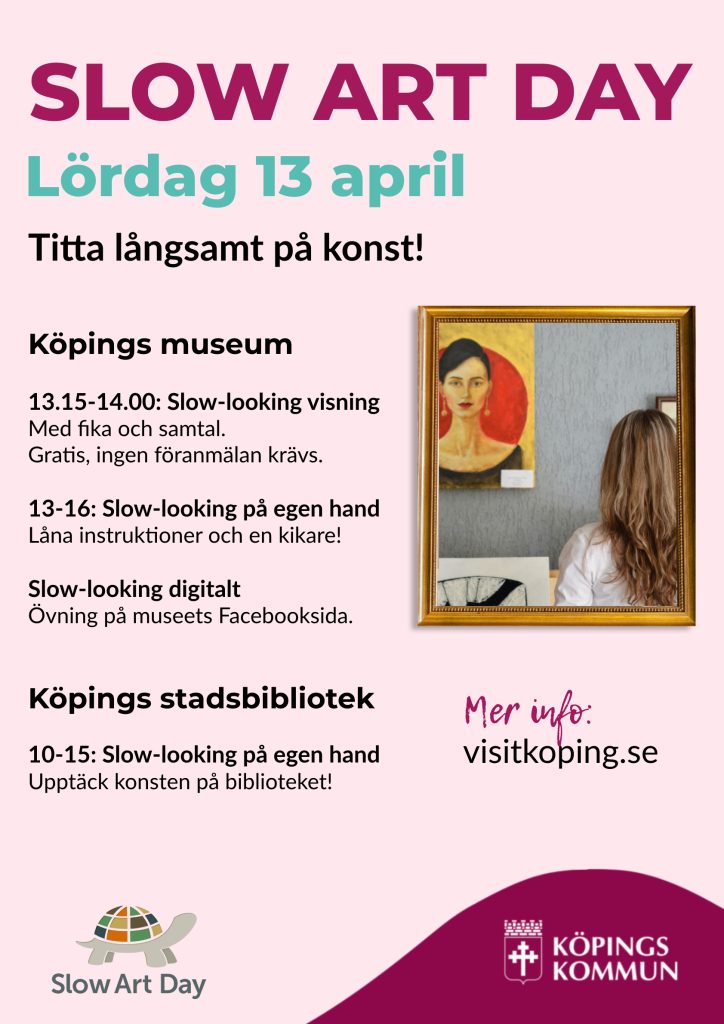On April 13th, Andrea Gumpert, Gallery Educator, and Marie-Pierre Adam, Interpreter-Guide, hosted the National Gallery of Canada’s second Slow Art Day, and reported that it was a resounding success.
The Gallery provided three options for participation this year:
– an in-person guided group experience
– slow-looking “on your own” with provided handout (shown below)
– slow-looking from home using a guided video
And participants were given the option to participate in either French-language or English-language sessions.
For the in-person guided event, hosts Andrea Gumpert and Marie-Pierre Adam greeted participants next to the below Slow Art Day signage in their Great Hall.

The in-person event was divided in two parts (that each of the French and English speaking groups followed).
For Part 1, Andrea led the 13 participants in the English-speaking group to the Indigenous and Canadian later galleries, and Marie-Pierre led the 11 French-speaking participants to the European baroque galleries. They each then invited their participants to select one artwork and spend 10 minutes looking slowly at it. After the 10 minutes, they regrouped and discussed the experience.
Across the two groups, participants commented on how much more they noticed about the art when they gave themselves permission to really spend time with it – a seemingly obvious but nonetheless revelatory experience. Participants also said the group setting was helpful, particularly for the younger attendees (11 and 14 years old.) People also told stories about the works, and contemplated the technical skills behind the art.
For Part II, the English-speaking group moved to the Contemporary galleries while the French-speaking group moved to the later modern galleries. This time Andrea and Marie-Pierre suggested three optional challenges:
1. Spend 15 minutes with one artwork
2. Select a work that you didn’t have an immediate affinity for
3. Draw or write while spending time with the work
They then had a second discussion with each group.
The French-speaking group in the modern gallery appreciated the chance to express themselves on paper; either by drawing or writing their ideas. Some participants expressed that the second round of slow looking was easier – that slow looking felt like a muscle that needs to be warmed up first. One participant who chose a work they would not have normally looked at shared that their slow looking revealed parts of the painting they thought were wonderful after all – and raised many questions around the choices made by the artist at that time in their career.
At the end of the day, participants provided feedback.
Here are two quotes, one from the English-speaking group and one from the French-speaking group (i.e., these are not translations from one to the other – but separate quotes):
The slow art English session was a welcome new approach for me to viewing art. Our guide was
informed and fun, and she explained the process well. I am sure I will use this approach on my own
sometimes at art galleries, and elsewhere. Thank you for offering it — it is a good middle place
between a tour with a guide and a hands-on activity.
Bonjour à toute l’équipe, je profite de ce courriel pour vous remercier pour l’organisation de
l’activité Slow Art de samedi dernier. J’ai une la chance de participer à cet événement en présence
de Marie-Pierre et du groupe pour les personnes francophones. J’ai fait plusieurs apprentissages
dans un environnement paisible et vraiment intéressant ! Merci pour votre dévouement à rendre
l’art accessible et respectueux ! Je vous en suis très reconnaissante ! Je souhaite une longue vie
au Musée des Beaux-Arts du Canada !
We are glad to say that The Gallery is now planning regular slow looking sessions throughout the year (we love that!) as well as participating in Slow Art Day 2025.
– Johanna, Ashley, Jessica Jane, and Phyl






